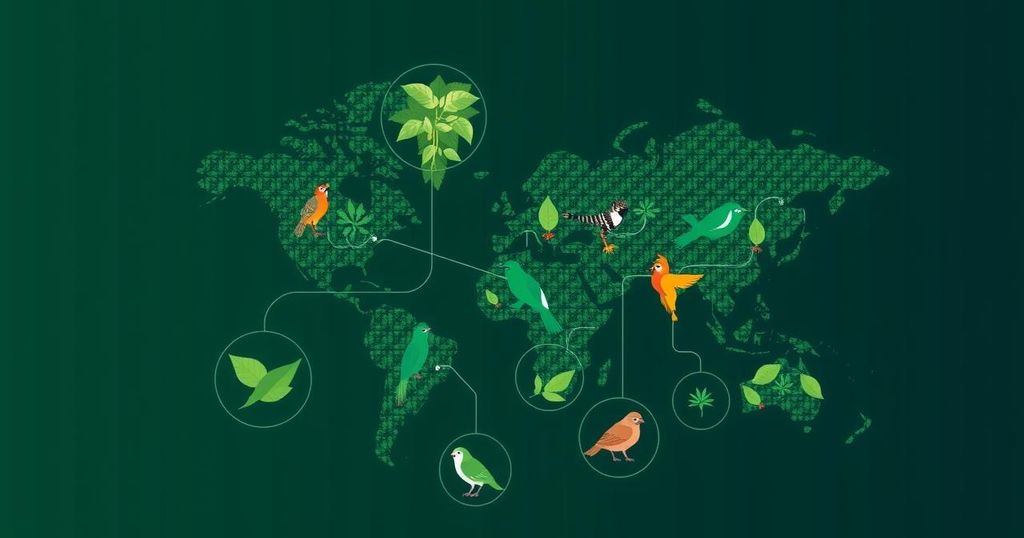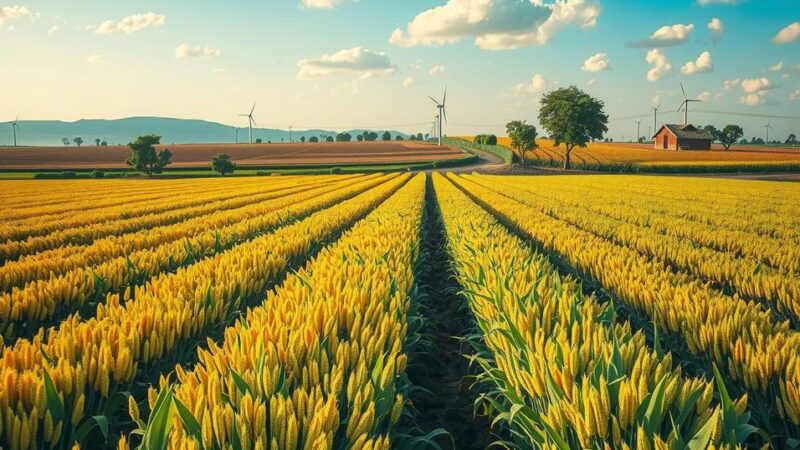COP16 gathers global leaders in Colombia to assess progress in biodiversity protection amid alarming species decline and habitat loss. The summit follows the Kunming-Montreal framework establishing goals for halting biodiversity loss by 2030. Biodiversity encompasses various life forms essential for human survival, yet many face extinction. Over 163,000 species are evaluated, with significant threats impacting ecosystems, and countries commit to financial and conservation targets to protect natural resources and promote sustainability.
Leaders and representatives from across the globe convened in Cali, Colombia for the 16th meeting of the Conference of the Parties to the Convention on Biological Diversity (COP16). This summit is of particular significance given the alarming decline in plant and animal populations, together with the widespread destruction of their habitats—critical ecosystems such as forests, rivers, and oceans. During the previous biodiversity summit in December 2022, nearly two hundred countries endorsed an ambitious plan aimed at reversing biodiversity loss by 2030. The Cali gathering represents a pivotal moment for holding world leaders accountable for their commitments to nature conservation. Biodiversity comprises the intricate network of all living organisms on our planet, including animals, plants, fungi, and microorganisms like bacteria. This diversity is crucial for human survival, as these species collectively provide essential resources such as fresh water, clean air, food, and medicinal compounds. The interdependence of various species is vital, as a rich tapestry of life must interact seamlessly to offer these benefits. Plants play a fundamental role in enhancing the physical environment by cleansing the air, moderating temperatures, and buffering the impacts of climate change. Ecosystems such as mangrove swamps and coral reefs act as critical defenses against coastal erosion caused by rising sea levels. Normal species evolution includes extinctions; however, the current rate is alarmingly accelerated, with extinction occurring 100 to 1,000 times faster than the natural historical average. The International Union for Conservation of Nature (IUCN) maintains a “red list” of endangered species, wherein over 163,000 species have been evaluated and approximately 45,300 of them are classified as threatened with extinction. Estimates by the United Nations’ biodiversity body, the Intergovernmental Science-Policy Platform on Biodiversity and Ecosystem Services (IPBES), suggest that at least one million species face extinction, primarily due to human-induced factors. Various threats contribute to this biodiversity crisis, including habitat destruction, overfishing, and unsustainable harvesting practices. Research indicates that from 2001 to 2021, the world lost 437 million hectares of tree cover, a significant portion of which constituted primary forests. The decline in biodiversity is particularly pronounced in Latin America, where animal populations have decreased by 95%, largely stemming from habitat destruction and overexploitation. Moreover, climate change exacerbates these threats, with the UN advocating for limiting global temperature increases to 1.5°C above pre-industrial levels to mitigate further biodiversity losses. At COP15, held in December 2022, countries reached a milestone agreement known as the Kunming-Montreal Global Biodiversity Framework, which aims to protect 30% of the Earth’s land and seas by the year 2030. This accord seeks to halt and reverse biodiversity decline, with a long-term goal for humanity to coexist harmoniously with nature by 2050. The agreement outlines four principal objectives: enhancing ecosystem and species conservation, promoting sustainable resource use, ensuring equitable sharing of natural resources, and increasing financial backing for biodiversity initiatives. Notably, governments and private entities aim to allocate at least $200 billion annually for biodiversity conservation by 2030, with wealthy nations committing to raising their contributions to developing countries for biodiversity projects to $30 billion per year by the same deadline. The ongoing discussions from October 21 to November 1, 2023, in Cali revolve around evaluating nations’ pledges related to biodiversity preservation amid criticisms that many countries may fall short of their promises. Key discussions focus on ambition levels in achieving specific targets, financing for conservation projects in developing nations, and fair distribution of profits derived from genetic resources. The Colombian environment minister, Susana Muhamad, is advocating for a renewed approach to ecosystem management under the theme ‘Peace with Nature’, a call to reassess our connection to the natural world. Several heads of state, including Brazil’s President Luiz Inacio Lula da Silva and Mexico’s new President Claudia Sheinbaum, are expected to participate in these crucial deliberations.
The article examines the proceedings of COP16, a crucial biodiversity summit convened in Cali, Colombia, which aims to address the escalating extinction rates and habitat destruction affecting global biodiversity. It provides an overview of the significance of biodiversity to human survival, highlights the alarming statistics regarding species extinction, identifies threats to biodiversity, and outlines existing international agreements aimed at reversing biodiversity loss. The context is set by referring to previous summits and commitments made by countries under the United Nations framework.
In conclusion, COP16 serves as a critical juncture for evaluating international commitments to biodiversity conservation amid increasing concerns about global species extinction and habitat degradation. The summit facilitates dialogue on accountability for past promises and underscores the urgency of collaborative efforts to protect the richness of life on Earth. Through the Kunming-Montreal Global Biodiversity Framework and additional concerted actions, there lies hope for reversing biodiversity loss and ensuring sustainable coexistence with nature in the years to come.
Original Source: www.bbc.com






